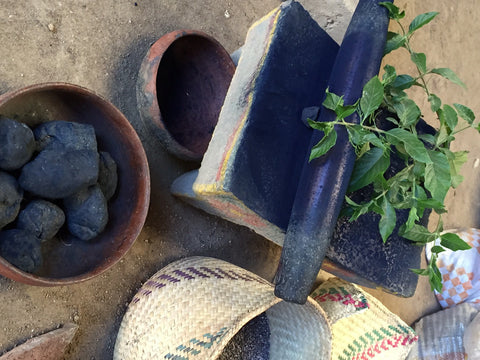We are obsessed with indigo. Who isn't? The rich color reminds us of the sea, and never goes out of style. We set out to celebrate it in our Josefina Tote, which is made in Oaxaca from hand spun local wool, hand dyed with natural indigo, and woven in an ombre pattern by master artisan Josefina Jimenez and 9 other Zapotec women in Teotitlan del Valle, the center of wool weaving and natural dyes in Oaxaca.

Photo by Norma Schaefer, Oaxacan Cultural Navigator
The indigo plant is native to the Pacific Coast of Oaxaca, and the strain grown there produces one of the most powerful, intense colors in the world. It is one of the oldest sources of color for textile dyeing and printing. The oldest known indigo fabric is 6,000 years old, discovered in 2009 in Peru. The blue color is drawn out of the leaves in an alkaline bath, pressed into cakes and dried until the powder is needed. Read more about the indigo process in Oaxaca from Norma Schaefer.

The fastest material to dye with indigo is wool. Buying machine-spun wool is cheaper (and much easier), but in the processing the fibers grow thin and brittle, and lose some of their lanolin, making them less resilient to wear. One way to reduce the cost is to add nylon or polyester threads, which further reduces the quality. The wool for the Josefina Tote comes from the mountains surrounding the Oaxaca valley, where the altitude results in a soft, dense fleece. It contains no additives, and is hand-spun. Read more about the importance of hand-spun wool in this piece by Norma Schaefer.
Photo by Norma Schaefer, Oaxaca Cultural Navigator

